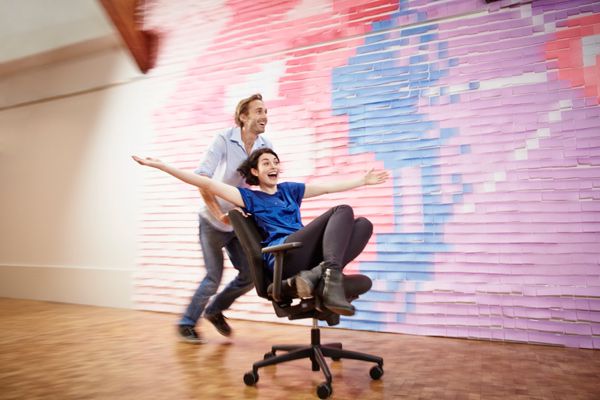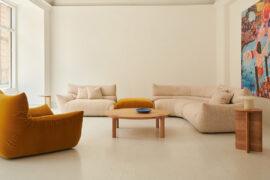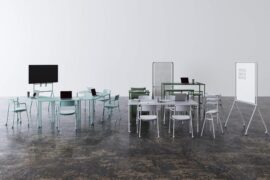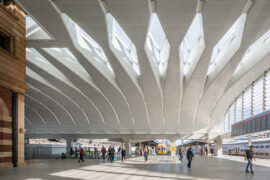WELNIS introduces us to the concept of human sustainability in the workplace, and explains just what workplace elements aid our mental and physical wellbeing.

March 31st, 2016
Did you know, we spend more time sitting during the day than we do sleeping? We average 9.3 hours a day of being stagnant and placing our spines in positions that have the potential to cause irreparable damage to our backs. It is due to this that we see a rise in popularity for sit-stand desks, and a growth in conscientious planning of human sustainable workspaces.
Much like the idea of being environmentally sustainable, the core concepts behind human sustainable environments take a holistic approach to the mental and physical wellbeing of users of a variety of spaces, with an aim to also improve productivity. Given that a large portion of time is spent in the workplace, it is crucial to consider the ways the space can have both a positive and negative impact on health and wellbeing.
“The boundaries between living, working, communicating, and socialising are blending into one another,” says WELNIS’ Nigel Hobbs, who is continually pushing the envelope on technologies and techniques to improve the workspace. “For me, the number one thing in any organisation is cementing wellness into people’s behaviours and way of living.”
Of course, the idea of human sustainability is not merely restricted to sitting down, or the use of standing desks. To Hobbs there are 10 key interior elements that can positively benefit wellness. These include:
Some of these might seem obvious, but others such as acoustics also require more in-depth consideration, especially in relation to the popularity of open-plan workspaces. Hobbs contextualises this for us: “Every organisation will have a mixture of extroverted and introverted individuals – the latter tend to get really uncomfortable if they’re hanging out with the former too much.”
As human sustainability continues to be embraced as a vital component of the work environment, more technological advances and intelligent designs are called for. Happier and healthier employees are ultimately more productive and the way in which employees interact with their workspaces is crucial to consider when planning practical and enjoyable environments. At its core, human sustainability is a way of thinking, and intelligently creating an exterior environment that reflects and encourages a healthy interior environment.
WELNIS
welnis.com.au
INDESIGN is on instagram
Follow @indesignlive
A searchable and comprehensive guide for specifying leading products and their suppliers
Keep up to date with the latest and greatest from our industry BFF's!

A curated exhibition in Frederiksstaden captures the spirit of Australian design

Welcomed to the Australian design scene in 2024, Kokuyo is set to redefine collaboration, bringing its unique blend of colour and function to individuals and corporations, designed to be used Any Way!

For Aidan Mawhinney, the secret ingredient to Living Edge’s success “comes down to people, product and place.” As the brand celebrates a significant 25-year milestone, it’s that commitment to authentic, sustainable design – and the people behind it all – that continues to anchor its legacy.
Stone from Wee Jasper is a focal feature of Canberra’s York Park Oak Plantation.

You and Me is a stylish and modern Ping Pong table that doubles as an entirely functional conference or dining table through a clever hiding of its sporty features.
The internet never sleeps! Here's the stuff you might have missed

The Australian Institute of Architects has unveiled 43 projects representing the pinnacle of contemporary design, with winners addressing housing, climate and affordability crises through innovative solutions.

Recognised as winners at the INDE.Awards 2025, Enter Projects Asia in collaboration with SOM have received The Influencer award. Their work on Terminal 2 Kempegowda International Airport Interiors redefines the aesthetics of airport design through a monumental expression of biophilia, sustainability and craftsmanship.